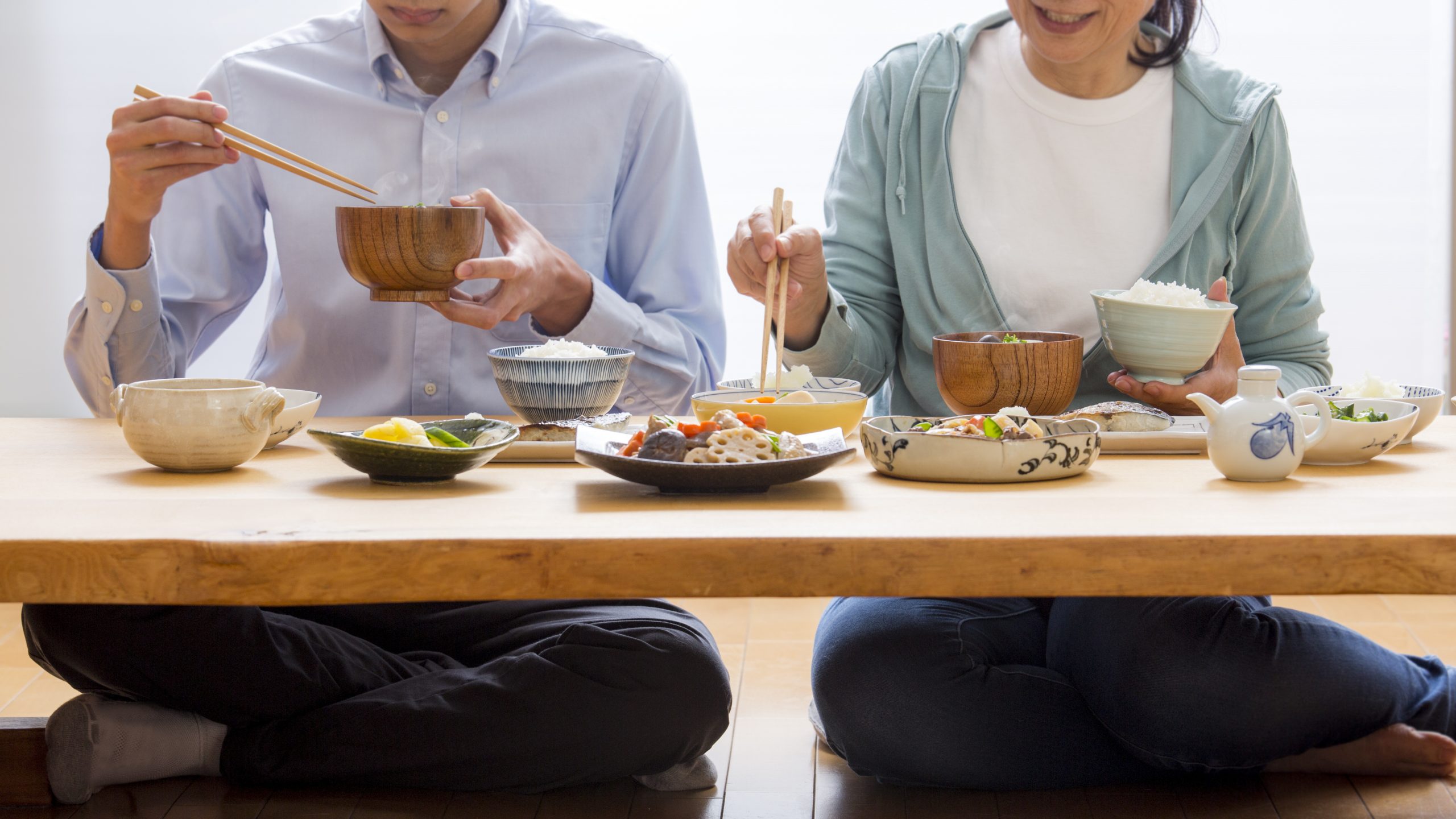Traditionally, the Japanese diet is often a simple one, involving rice and soup, along with assorted dishes that compliment rice.
Before the late 7th century, meat was commonly consumed by the majority, but with the introduction and proliferation of Buddhism, dietary habits were affected. In the 8th century, a vegetable based diet was encouraged and meat consumption was prohibited. Strong smelling herbs were also limited or prohibited, such as garlic. This lasted for hundreds of years, until the late 19th century, when meat was reintroduced to the diet. However, vegetarian cuisine remains in the form of shojin ryori, or vegetarian Buddhist Temple fare.
Shojin Ryori relies on several varieties of small vegetable dishes. Each dish promotes and exploits a taste, whether it be sour, sweet, bitter, salty, delicate, or spicy/hot. Colouring is also important. This type of fare also influences cha kaiseki ryori, which is food served before a traditional tea ceremony.
The influence of Buddhism profoundly affected the dietary habits of the Japanese. For the layman, little meat is consumed even in recent times. Protein alternatives, such as tofu and fish, remain popular. Further, garlic is an uncommon ingredient.
Everything is eaten with chopsticks at a low table, where diners sit on the floor with legs folded underneath. Smaller bowls can be brought up to the mouth to facilitate eating, but larger plates must remain on the table.
The women normally cooks and serves all the meals in her role as the domestic. She is the queen of anything related to the household, including finances, while the man is simply the breadwinner.
And for all the meals, rice is the most important staple. Almost every meal, whether it be formal or informal, involves a bowl of rice. This remains constant. However, whatever side dishes are prepared, all utilize seasonal ingredients flavoured in a manner that do not overpower their natural flavour. Some would call this “bland”, while others would call it “refined”.
Traditionally, breakfast is comprised of a bowl of miso soup with green onion and tofu, some Japanese style pickles, a piece of grilled fish, and a bowl of rice. It is nutritious and light enough to not weigh the stomach down for the day, but also heavy enough to provide sustenance.
Rice is served for lunch again. Often, when this meal is eaten away from home, a bento is made. The rice will be in the form of onigiri, and other treats easy to eat without making a mess are included, such as tamagoyaki, fish cake, and other bite sized delights tasty even when cold. Bento is packed in a lacquered wooden box with a lid, wrapped in a furoshiki. A popular belief is that a good bento was prepared by a loving wife or mother, and is sign of devotion.
And finally, for dinner, rice is served again, along with soup. A more elaborate main dish is prepared, such as Japanese style meat cutlet or chicken teriyaki.
Note that these are traditional Japanese meals. These days, Japan is inundated with food from all parts of the world, and dietary habits are slowly changing with the effects of globalization. While this has its merits, it is also detrimental. Obesity has reached an all time high, as has malnutrition. Traditional style breakfasts are quickly being dropped for coffee and toast, which is far less sustaining.
